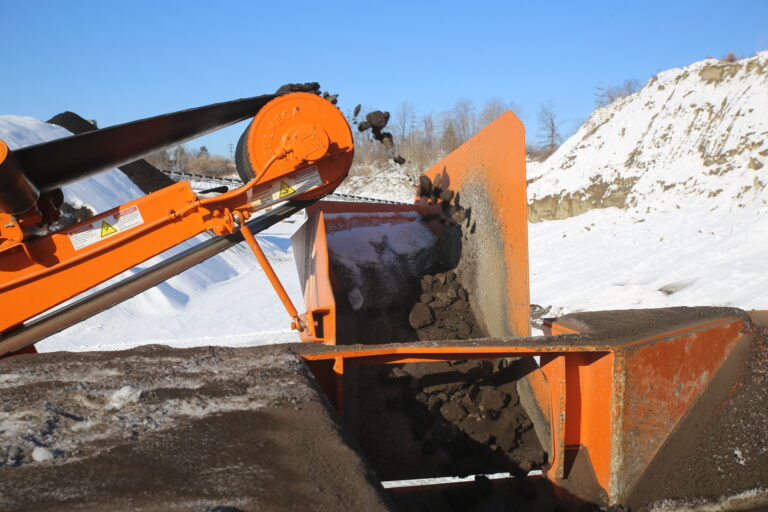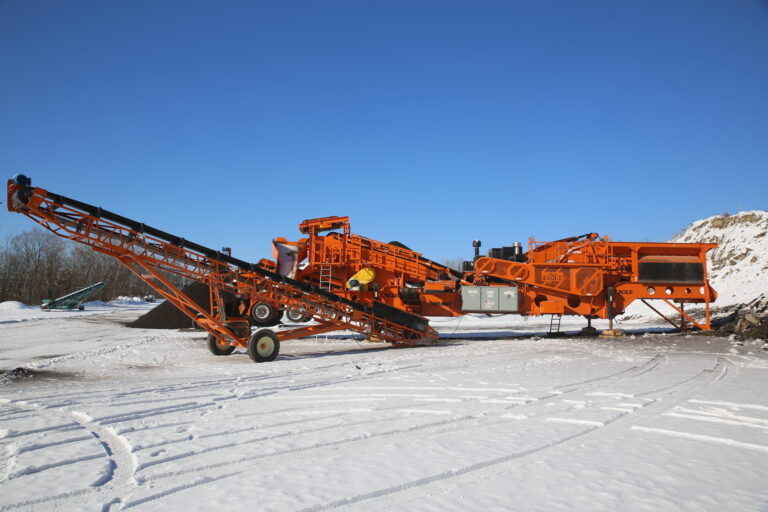It’s that time of the year again, where temperatures in the northern hemisphere start to drop. You know that crushing in the cold, or shutting down your operation, isn’t too far away. The easiest way for your operation to freeze is by not knowing the proper procedures for cold crushing or for shutting down your equipment for the season.
Crushing in the Cold
If your operation continues through the cold, winter months, the most important part of your operation to prepare is your crew.
Before venturing out onto the frigid crusher site, team members should ensure that they are appropriately dressed for cold to freezing temperatures in order to prevent serious medical conditions. It is recommended to dress in thick layers and to insulate the head, ears, and extremities like hands and feet to maximize heat retention.
In addition to covering up the body from the cold, it is equally important to prepare the body for low temperatures by adequately stretching. Working outdoors in the winter weather can tighten muscles and lead to strains more quickly. By warming up and stretching beforehand, team members can avoid pulling a muscle while operating their crusher.
When a crew is running a crusher in the cold and performing physical labor, the energy they spend while working is intensified by lower temperatures. The same task that is accomplished in warmer months may not be completed as quickly in the winter, and it can be easy for team members to overexert themselves. It is essential to slow down and take breaks.
Similarly, winter weather presents safety hazards like slippery crushing equipment and ice on site. It is crucial for team members to assess the ground around them as they move about the job in order to avoid slips and falls. Likewise, it is necessary to maintain a crusher from becoming slippery as a fall while operating this machinery could result in serious injury.

Going into Hibernation
If you are planning to halt your operation for the season, now is the time to start planning maintenance on your equipment.
First, you need to perform an inspection on all your equipment. Inspect everything and make a list of what needs repaired or replaced now and what is likely to need repairs in the near future. You’ll have a list of mechanical and electrical issues but don’t forget about issues that may be a safety concern as well. This way, you’ll be on top of it when it’s time to start crushing again.
Once you have your list complete start planning your work. Here are a few questions to yourself. How much labor will I need? What parts do I have in stock? Are there parts I need to order and is there a lead time for them? After you have the answers to these questions you can begin to plan your work.

Planning for a productive start
Once you prepare your equipment and crew for cold crushing or hibernation, our best recommendation is to go back and review what went well and what went bad. Determine what made things go smooth and what were the setbacks or issues of why things went bad. What were the things that we could have done differently to make the work go quicker or better? Once you’ve determined these things your next planned maintenance will go even smoother.
Remember, your crushing operation is only at its best when your team and equipment are at their best. The winter season can bring with it challenges and taking the appropriate precautions may slow production; but it is valuable to take the time to be prepared. By safeguarding against the cold, your team will remain up and crushing.
Have more questions?
Members of Team Eagle are always available to answer any more questions you might have. Check out our various departments: sales, parts, service, dealers, or general contact.
This article does not serve as an official safety recommendation by Eagle Crusher and should not be viewed as such. All relevant staff should consult their owner’s manual before operating Eagle Crusher equipment, or any other manufacturer’s equipment, and comply with the safety guidelines therein.



